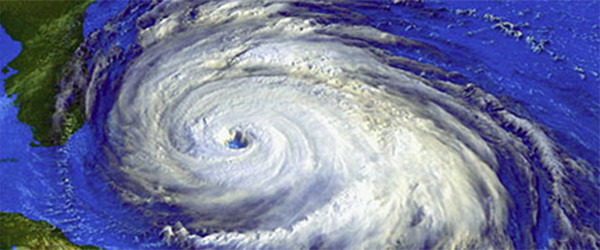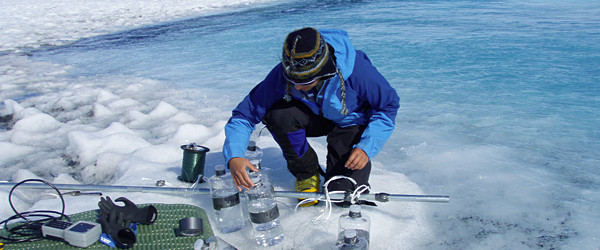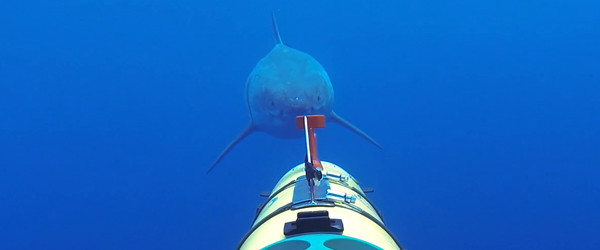ABE Data Acquisition & Capabilities
Precise navigation, robust control and co-registered sensors permit ABE to characterize the seafloor and the near-bottom environment on the meter-scale through complementary sensing modes. Consequently, there are four different kinds of data and hence data products that can be expected routinely from ABE operations.
![[Gallery Photo]](cms/images/dpandya/2007/2/vehicles_abe_proc_nav_40500_thumbnail_40501.jpg)
Example of processed post-dive navigation data (blue line) as derived from within-dive LBL fixes (green crosses) from an ABE near-bottom (5 m off) photographic survey on the Mid-Atlantic Ridge - see figure below for an example of a color photograph so obtained. (Chris German and Dana Yoerger, Woods Hole Oceanographic Institution)
ABE Navigation Data
The most fundamentally important data-set for any ABE operation - a requirement for all autonomous vehicles if missions are to be achieved successfully - is accurate seafloor navigation.
The navigation used for ABE is a long-baseline (LBL) system augmented with Doppler velocity logging. For LBL, ABE uses between 2 and 4 seafloor transponders, which are identical to those used by Alvin and Jason. The techniques used to set, survey, and recover the transponders are also identical. Presently, ABE uses four fixed frequencies, although plans are in place to expand this to eight and to allow the frequencies to be selected in software. ABE interrogates the transponders on a 10-second cycle. These interrogations are also heard at the vessel, which allows ABE to be tracked from the ship with only occasional interrogations from the ship to keep clocks synchronized. ABE does not depend on these interrogations from the vessel, however, so if the vessel leaves the site ABE's navigation is not impacted.
In real-time, ABE uses the round-trip travel times, the vehicle depth measurement and the local sound velocity profile to compute slant ranges. Based on vehicle and transponder depths, these slant ranges are projected into the horizontal plane and a fix computed using either a deterministic (two transponders) or least-squares (3 or more transponders) solution. ABE uses a series of filters to eliminate incorrect ranges caused by surface reflections and noise. The fixes are combined with the dead-reckoning solution from the doppler navigator and compass to produce the real-time position estimate, which is typically repeatable within a given transponder array to about 2 meters.
At the end of each run, the data is postprocessed to produce a more accurate track. On the first dive in each area, the compass is recalibrated using magnetometer and compass data from slow spins during descent. Acoustic travel times are refiltered to recover as many good fixes as possible. For the first run in a new net, the transponder positions are adjusted to minimize the least-squares error for fixes with three or more ranges. Finally, the refined fixes, the recalibrated compass, and the Doppler navigator data are recombined using a Kalman smoother. The final processed navigation data is reported in Latitude and Longitude in decimal degrees (suitable for importing into, e.g., GMT among other mapping tools) and is embedded within the time-stamped scientific data file for each dive.
![[Gallery Photo]](cms/images/dpandya/2007/2/vehicles_abe_multibeam_40505_thumbnail_40506.jpg)
Example of a bathymetric map image generated at sea in May 2006 at 9?30?N on the Mid-Atlantic Ridge using the SM2000 multibeam system (Chris German and Dana Yoerger, Woods Hole Oceanographic Institution)
ABE Bathymetric Data
Using either the SM2000 multibeam system (to depths up to 3,000 m) or the
Imagenex scanning sonar, high resolution bathymetric data (precision ~1 m,
accuracy ~2-3 m) can be obtained over an area of, typically, ≥2 km2 per dive
depending on (1) height off bottom/line-spacing selected for the survey and (2)
choice of mapping instrument used (multibeam vs scanning sidescan). The
bathymetric data products generated will be made available to the science user
in three forms suitable for different science user needs:
• raw x, y, z
bathymetry data files that can be reprocessed by the scientist, as required
•
gridded (5 m) data files in .grd format which can be readily imported by the
scientist into generic software such as GMT or Fledermaus, whether at sea or for
post-cruise analysis
• processed map images in .tif format that can be used
by the science party for immediate visualization of the gridded data set,
further dive planning while at sea and post-cruise report generation and
publications
![[Gallery Photo]](cms/images/dpandya/2007/2/vehicles_abe_ridge_photo_n_40511.jpg)
Example of a color photograph generated at sea in May 2006 on the Mid-Atlantic Ridge using ABE's 12-bit 1024 x 1024 pixel Digital Still Camera during ABE Dive 174 (Chris German and Dana Yoerger, Wood Hole Oceanographic Institution)
ABE Photographic Imagery
Using a dedicated high dynamic range (12-bit) 1024 x 1024 digital still camera,
color photographs can routinely be obtained from ABE. At an altitude of 5 m
above bottom, each image measures approximately 3 m x 3 m. A fresh image can be
captured every 5 seconds from ABE which, at a programmed survey speed of 0.4
m/sec, generates a 33% overlap between adjacent images. The standard
photographic data product generated by ABE will be a series of processed,
time-stamped color JPEG files. Together with the navigation, heading and
altitude (height-off-bottom) data included in the science sensor data files
(below) this will provide all the material necessary for interested scientists
to generate photomosaics of areas of particular interest. (Under the auspices of Dr.Vicki Ferrini, users will have free access to software
suitable for generating such photomosaics, as is already the case for
Alvin and Jason photographs).
![[Gallery Photo]](cms/images/dpandya/2007/2/vehicles_abe_temp_40531_thumbnail_40532.jpg)
Plot of temperature and optical backscatter data recorded by ABE when intercepting a buoyant hydrothermal plume near 8?S Mid-Atlantic Ridge, May 2006 (Chris German and DanaYoerger, Wood Hole Oceanographic Institution)
ABE Scientific Data
ABE Standard 3-D Navigation and Science Data Arrays
In addition to bathymetry and photographic data, numerous other sensors are routinely deployed on ABE and their data acquired. These are compiled at the end of each dive into a single scientific data file that is made available as a comma-separated-variable (.csv) text file. This is a format that can be readily imported into numerous data analysis programs such as MatLab or other software appropriate for handling large data-files (e.g. Kaleidagraph - Mac OSX).
[Note: although .csv format files make for easy accessibility, the volumes of data collected by ABE on any given dive are large. Consequently, some non-specialist software (e.g. Microsoft Excel) which only allow files of up to ~65,000 lines to be opened cannot be relied upon for routine usage. Science users wishing to take advantage of ABE will need to come to sea ready to take full advantage of the wealth of data that they will generate from their funded projects!]
The science data in each .csv file are organized into columns with labelled headings that cover time, processed navigation (vehicle position given in latitude and longitude in decimal degrees), depth, pressure (the primary variable from which depth is derived), height off bottom and heading (both essential for photomosaicing). Oceanographic data included in the same file include conductivity and temperature from each of the two C,T pairs mounted on the vehicle and optical backscatter output from the Seapoint OBS instrument. Geophysical data collected routinely on all deployments (in addition to the bathymetric data discussed previously) includes three components of magnetic field data. CHIRP sub-bottom profiler data can also be acquired if requested. For these geophysical data to be processed, a further .csv file is also provided that is typically used just by the ABE group for engineering purposes; it includes pitch and roll data in addition to the heading data provided routinely to all science users.










 Facebook
Facebook Twitter
Twitter Instagram
Instagram Vimeo
Vimeo YouTube
YouTube LinkedIn
LinkedIn RSS Feeds
RSS Feeds







